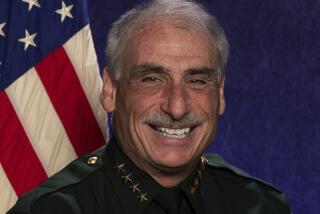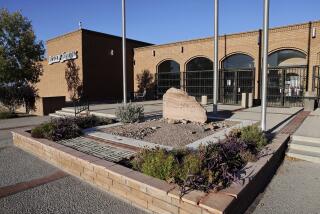Some media got name of Connecticut school shooting gunman wrong
- Share via
Like many fast-moving news events of the past, the mass shooting in Connecticut on Friday proved that speed can be the enemy of accuracy when it comes to news reporting.
Many news organizations misreported the identity of the suspect in the elementary school killings, and at least three — Fox News, Huffington Post and Slate — posted the wrong man’s Facebook page.
“News outlets are torn between the pressure to be first and the obligation to be right, and 11 times out of 10 it’s the pressure to be first that prevails,” said Marty Kaplan, a journalism professor at the USC Annenberg School for Communication and Journalism. “And yet each subsequent news story that illustrates the danger of doing that fails to stop it, just as each successive shooting fails to raise the issue of gun control to the level of salience it needs to be. I think the sad truth is, we will never learn our lesson.”
PHOTOS: Connecticut school shooting
Many media outlets — including CNN, ABC, NBC, the Los Angeles Times and Fox News — initially cited law enforcement sources as identifying the man responsible for the shootings as Ryan Lanza, 24. The suspect was later identified by authorities as Adam Lanza, 20, whom many news outlets identified as Ryan’s younger brother.
The news organizations could all cite a misrepresentation from an unnamed law enforcement source, as NBC News claimed on its website.
“Law enforcement officials initially told NBC News that the gunman was Lanza’s brother, Ryan, and they had sent out a bulletin to local and federal law enforcement agencies to that effect,” NBC said. “But when authorities went to Ryan’s Hoboken, N.J., home to search it, they unexpectedly found him there. Ryan said he was not involved in the shooting, … officials said.”
The news outlets that reposted Ryan Lanza’s Facebook page upped the attention he received by putting his face in the public domain. A sharp response followed on Lanza’s page on the social media site. An epithet on his page was followed by the statement: “It wasn’t me.”
As condemnation of Ryan Lanza continued to rain down via social media, someone added two more posts. The last read: “IT WASN’T ME. I WAS AT WORK. IT WASN’T ME.” There was no way of immediately confirming whether those words were written by the shooting suspect’s brother.
News outlets routinely use Facebook, Twitter and other digital outlets to speed their research, particularly on breaking news stories in which the background of key figures is little known. The Internet outlets have often provided clues that would have taken much longer to develop through more traditional techniques.
TIMELINE: Deadliest U.S. mass shootings
But USC’s Kaplan said the public and journalists should also pay attention to the cautionary evidence provided by the school shooting.
“When anyone posts stuff on social media, it’s an invitation to have it circulated in ways that are more rapid and less careful than even the stuff you see on cable news, which itself is not of the highest standard when it comes to confirming information,” he said.
To rely on the social media as a journalistic tool, without ironclad corroboration that the posts are tied to the individuals involved in a case, Kaplan said, “is to play with fire.”
“And it’s dangerous to the people whose lives get drawn into this,” he added, “and damaging to the public, which gets a kind of whiplash as it tries to figure out what is really going on.”
ALSO:
Connecticut school shooting: Resources for parents
Principal died in Connecticut school shooting, official confirms
Bodies of shooting victims are removed from elementary school
More to Read
Sign up for Essential California
The most important California stories and recommendations in your inbox every morning.
You may occasionally receive promotional content from the Los Angeles Times.














